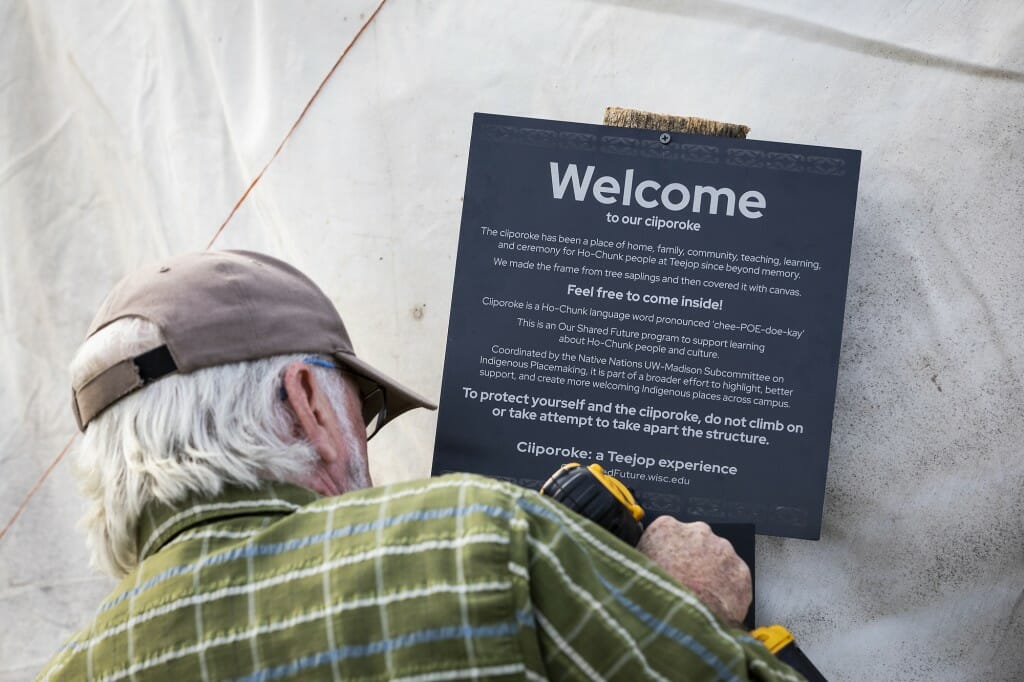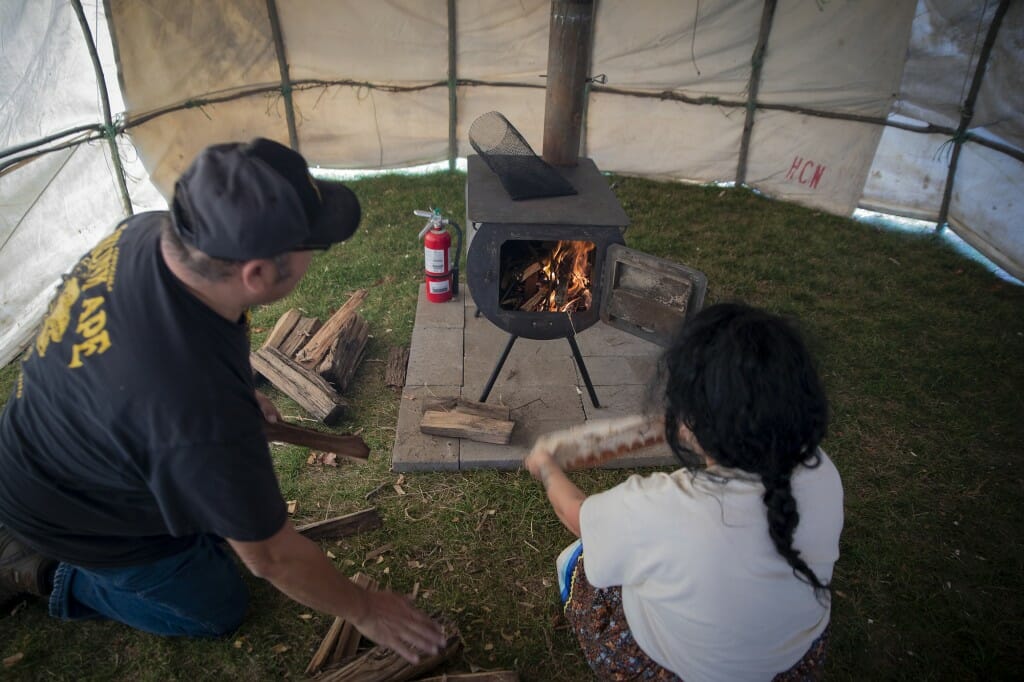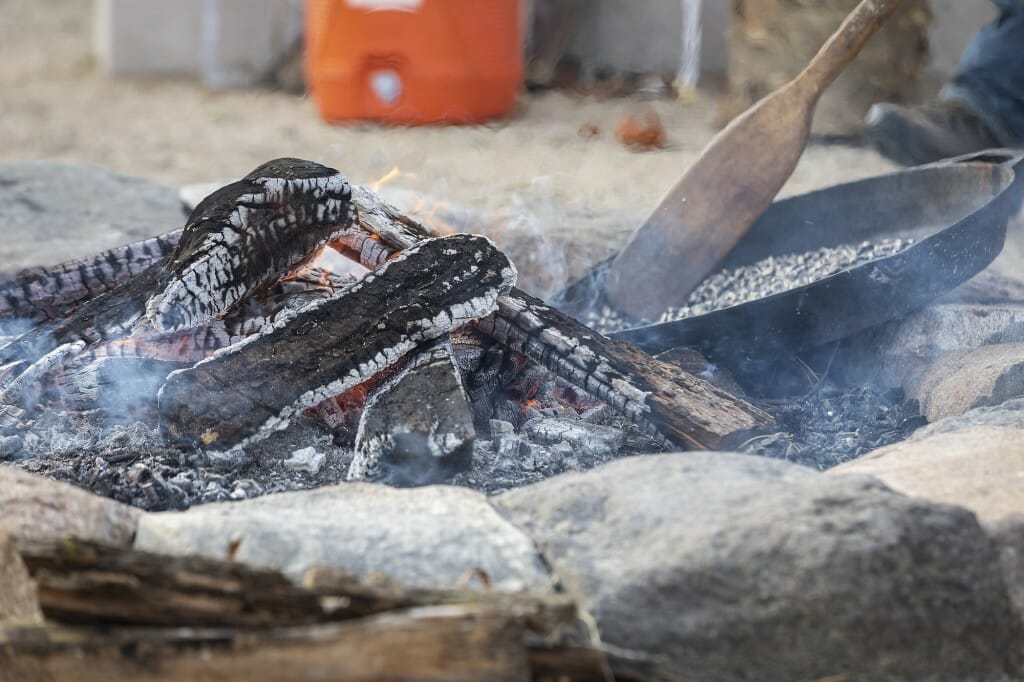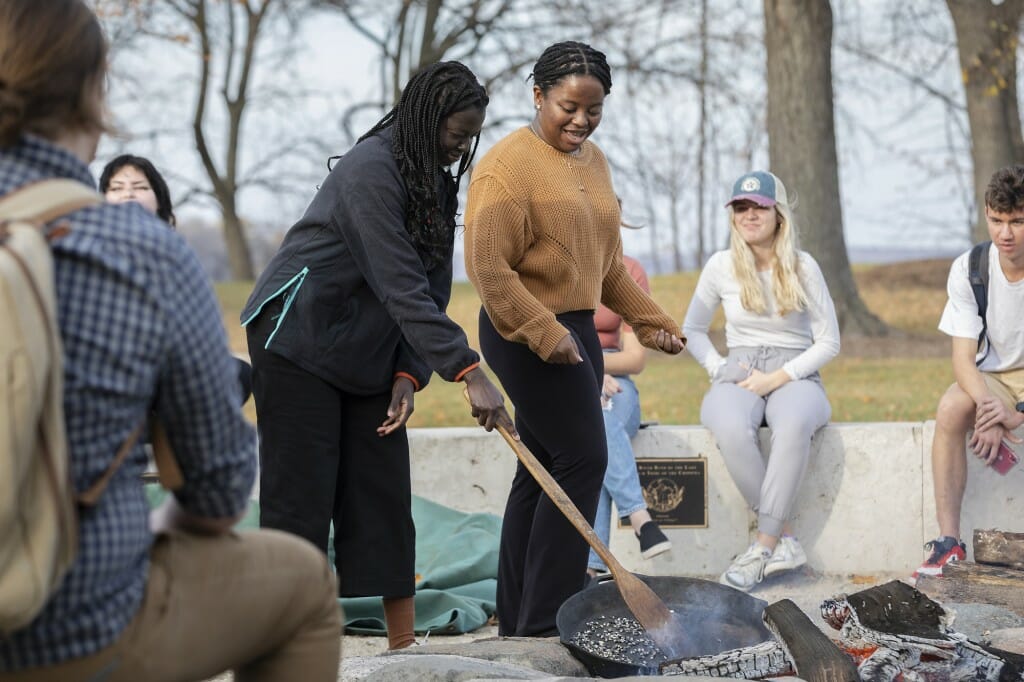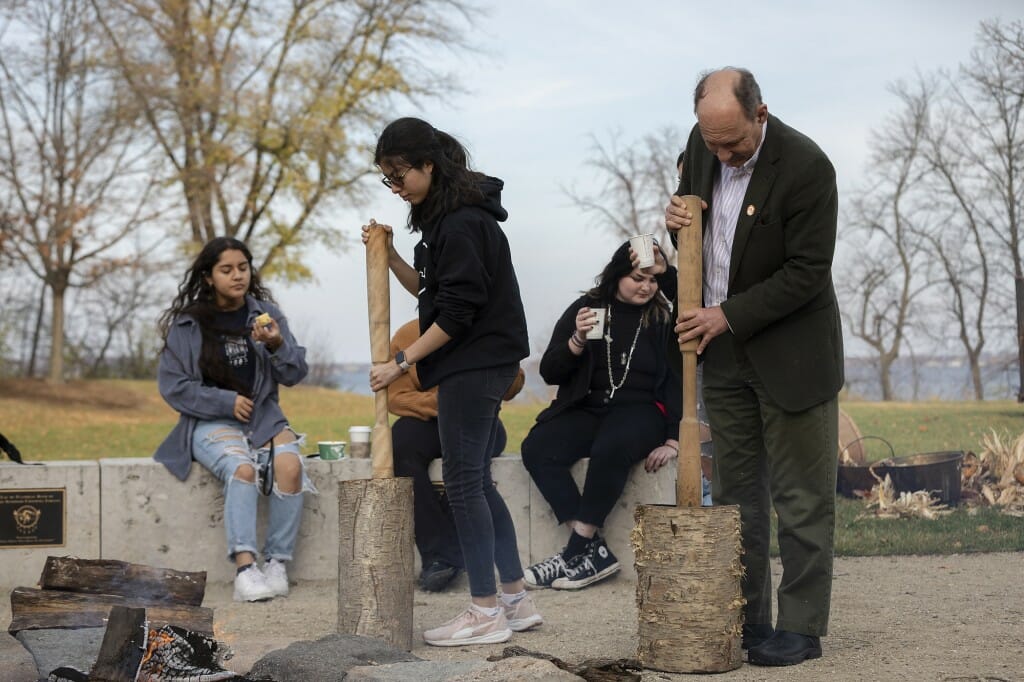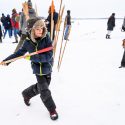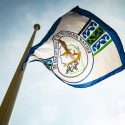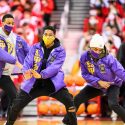Photo gallery Building of Ho-Chunk structure on campus promotes awareness of Indigenous land history
About two dozen campus volunteers assisted Bill Quackenbush, tribal historic preservation officer for the Ho-Chunk Nation, in constructing a Ho-Chunk housing structure Thursday on the North Lawn of Dejope Residence Hall on the University of Wisconsin–Madison campus.
The dwelling, called a ciiporoke (chee-poe-doe-kay), has long been a place of home, family, community, teaching and learning in the Ho-Chunk culture and remains an essential part of Ho-Chunk life.
“We are always looking for ways to share our culture through educational outreach, especially in November, which is National Native American Heritage Month,” Quackenbush said as he led the construction. “This was a classic opportunity to build something traditional on this campus as an educational tool.”
UW–Madison occupies ancestral Ho-Chunk land, a place the Ho-Chunk Nation call Teejop (day-JOPE). In an 1832 treaty, the Ho-Chunk were forced to cede the territory. The ciiporoke is the standard Ho-Chunk housing structure used in the Teejop area.
The project was hosted by the Native Nations UW Indigenous Placemaking Subcommittee, in conjunction with the Our Shared Future campus effort. The subcommittee, of which Quackenbush is a member, has embarked on a process to understand and better support Indigenous student, staff, and faculty relationships with campus. One goal of the project is to encourage people to explore how UW–Madison spaces can be transformed into Indigenous places. The ciiporoke will remain through the month of November.
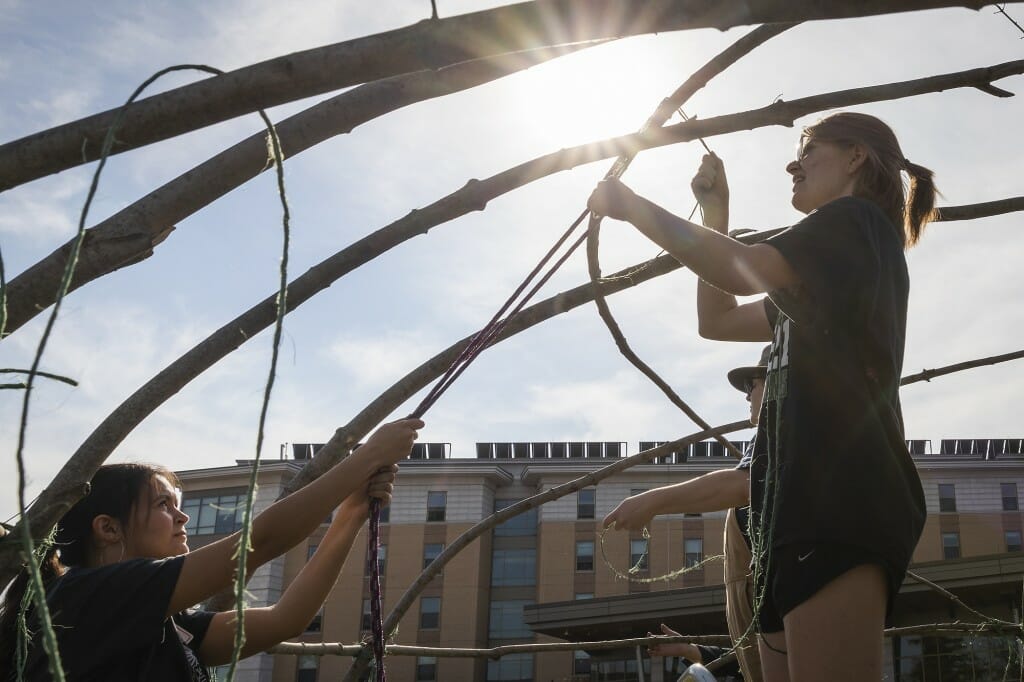
Students Paige Blackdeer and Abbey Woldt help construct the ciiporoke. Woldt, a freshman from Cross Plains, Wisconsin, honed the ends of lodge poles and tied them together, and she scaled the structure to help secure the canvas. “When I heard about this opportunity, I thought, Wow, I have to be involved,” said Woldt, a pre-nursing student who is Ho-Chunk. “I really hope this serves to help students and others learn more about the Native people who originally were on this land and to see our culture in real life and in person.” Photo by: Taylor Wolfram

Blackdeer ties a knot in the construction of the ciiporoke. The structure, 17 feet by 32 feet and made of maple poles covered in canvas, went up in about six hours. Photo by: Taylor Wolfram
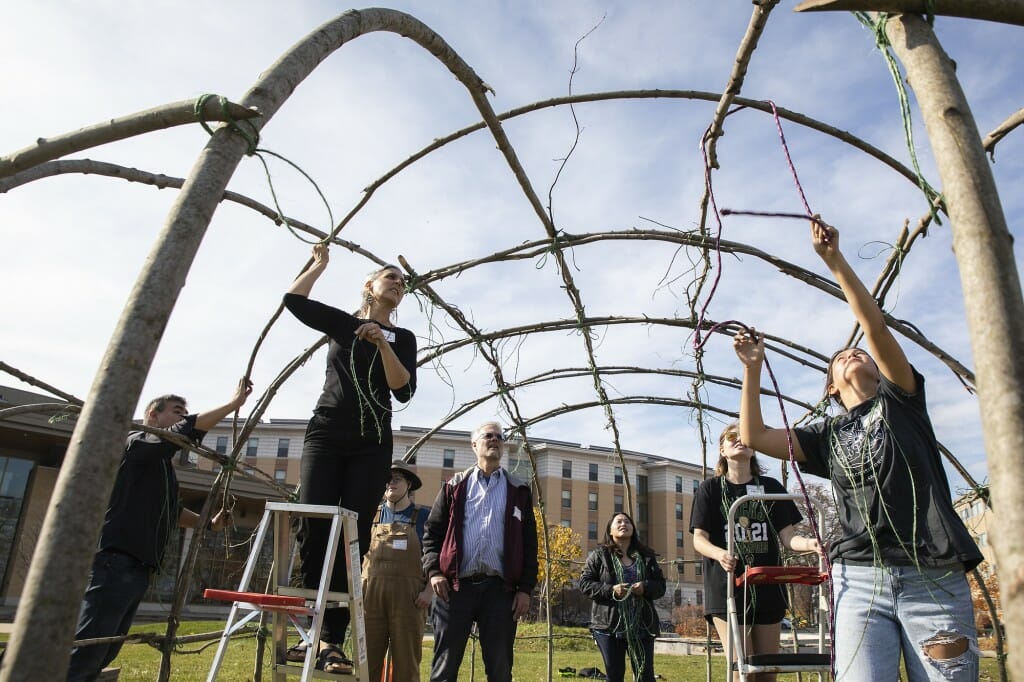
Volunteers building the ciiporoke, from left, include Blackdeer, Tom Dubois, Emily Smith, Woldt, Brian McInnes, Phoua Holt and Professor Marianne Fairbanks. Smith, a senior microbiology major, learned about the volunteer opportunity in her landscape architecture class. “I’ve never done anything like this, other than build a fort as a kid,” said Smith, of Spring Grove, Illinois. “It seemed like a cool opportunity to do something by hand instead of just read about it. And I hope it’s a reminder to students of where this land came from.” Photo by: Taylor Wolfram
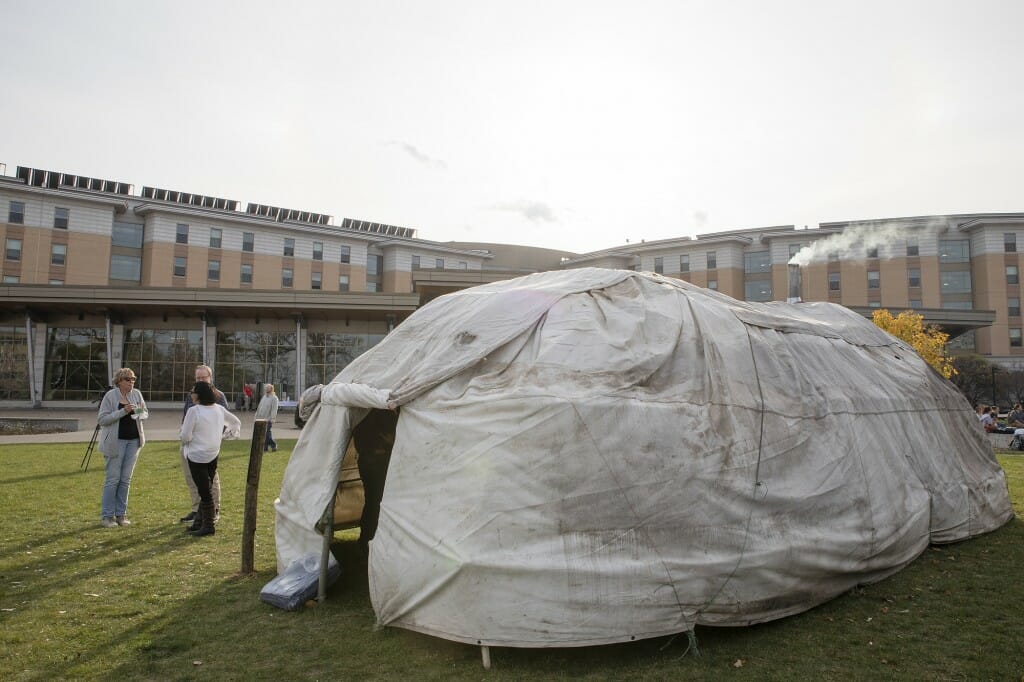
The ciiporoke will stay up through the month of November. Quackenbush said he hopes students and staff will engage with it in whatever ways feel right to them — “sit in it, study in it, reflect in it. The building of the ciiporoke is just one of many ways UW–Madison is celebrating Native November 2022 on campus. Photo by: Taylor Wolfram
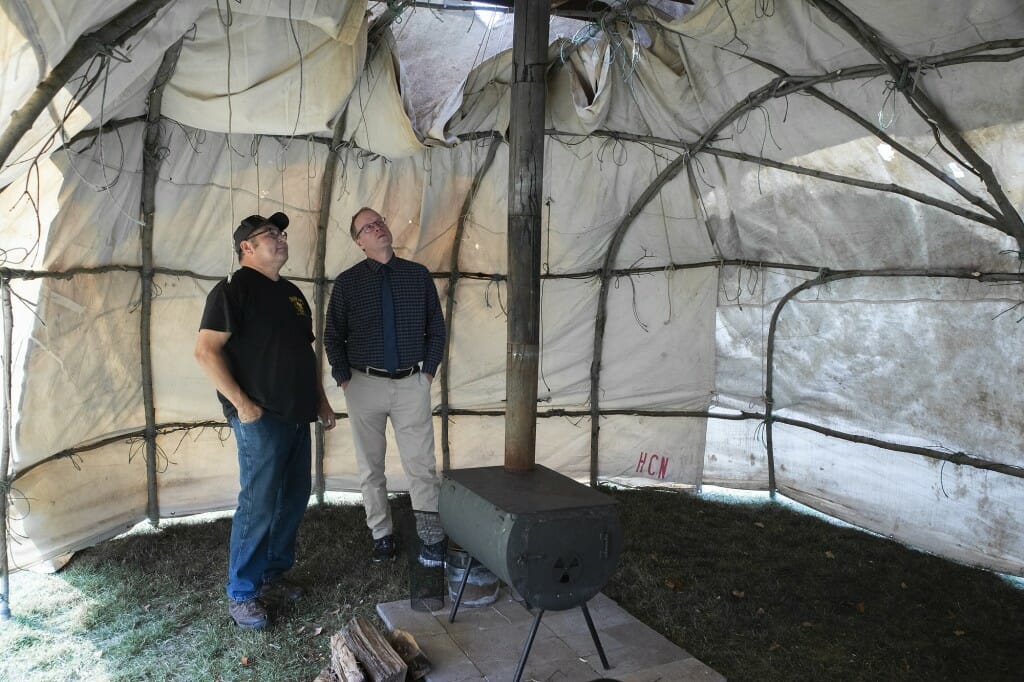
Bill Quackenbush, tribal historic preservation officer for the Ho-Chunk Nation, and John Zumbrunnen, vice provost for teaching and learning, talk inside of the ciiporoke. Photo by: Taylor Wolfram
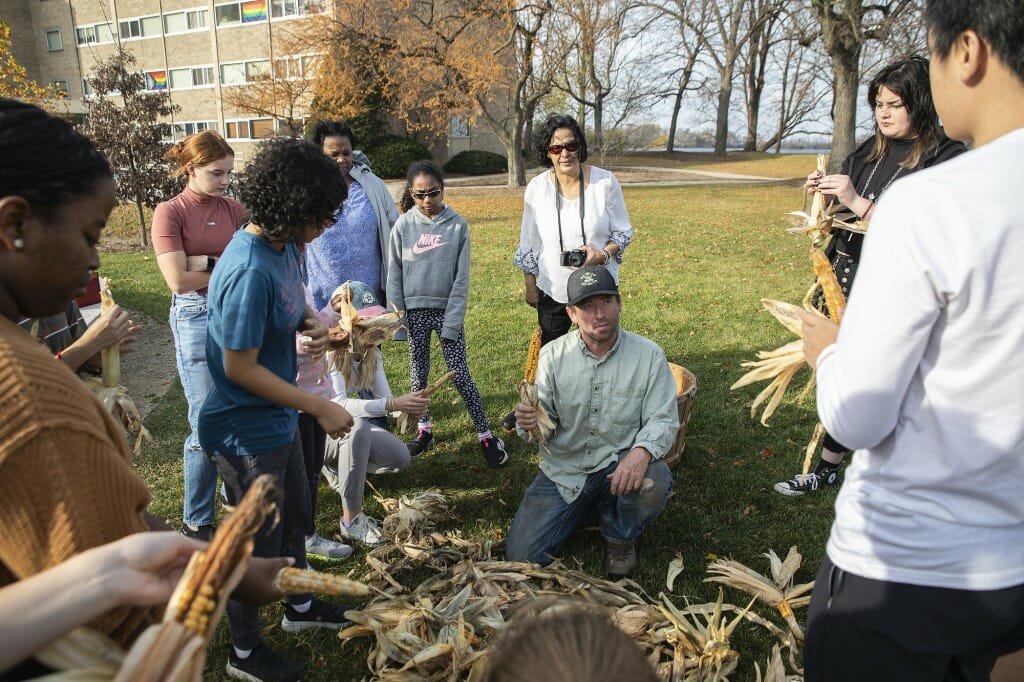
Dan Cornelius, a member of the Oneida Nation of Wisconsin and outreach program manager for the UW Law School’s Great Lakes Indigenous Law Center and CALS, demonstrated cooking traditional foods. Photo by: Taylor Wolfram
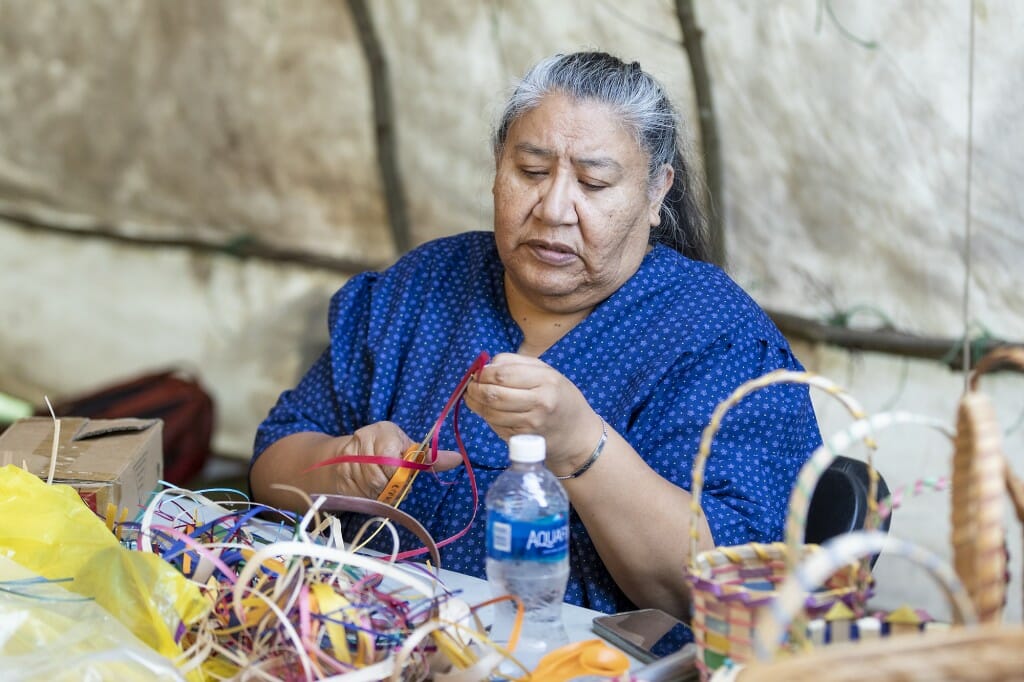
Kimberly Crowley, a Thunder Clan member of the Ho-Chunk Nation and a traditional black-ash basketmaker, instructs on how to weave the basket. Photo by: Taylor Wolfram
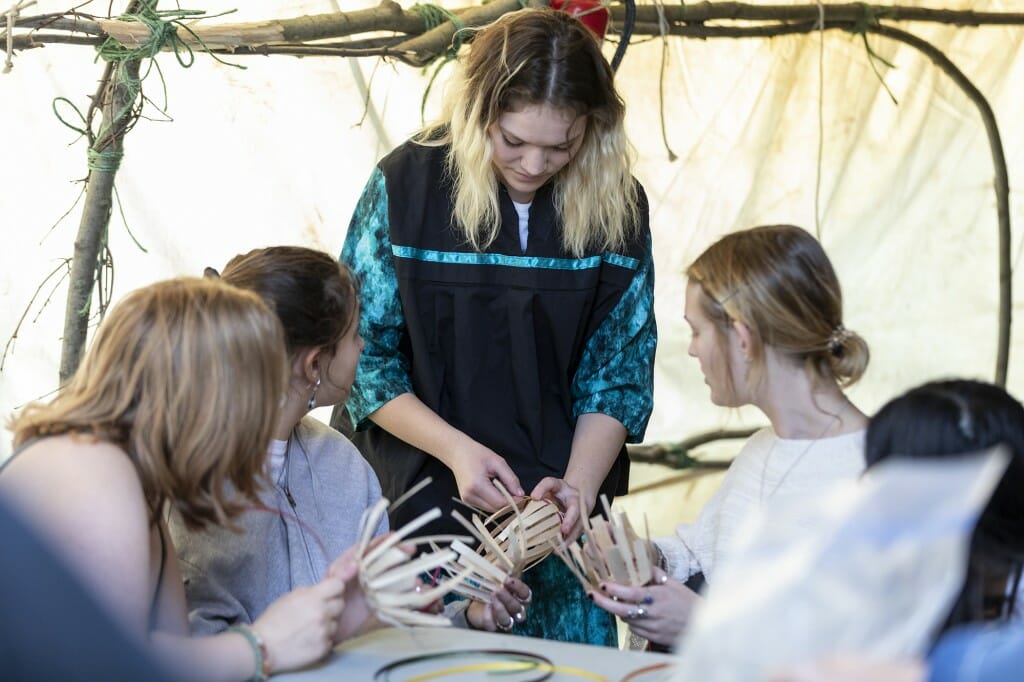
Weaving black ash baskets is a Ho-Chunk tradition. While some baskets are prized as works of art, others are useful tools for everyday use. Photo by: Taylor Wolfram
Tags: Native Nations, recent sightings

